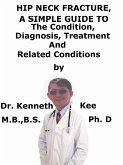Neck trauma is any injury to the structures of the neck such as the skin, blood vessels, spine.
A person must remember that the head controls the body through the brain.
The head and the brain inside it are connected to the body through the neck.
Any trauma to the neck can stop all connections of the brain to the body essentially cutting all transmission of the brain messages to the body and all blood and oxygen supply to the brain.
One of the ways used to kill a person is by hanging (suicides or death executions), guillotine (cutting off the head as in the French Revolution), and strangulations (homicides or murders).
Other ways of death execution is by gunshot wounds to the brain or neck or stab wounds to the neck.
Falls or ischemia to the neck blood vessels as transpired in the fall of Christopher Reeves (Superman movie) cause him to be paralyzed from the neck down.
Neck injury is not only trauma produced by blunt force trauma (falls, strangulation, hanging, infections, ischemia, motor car accidents, sports injuries) or penetrating injuries (gunshots, stab wounds) but also trauma due to repetitive stress as may be observed with poor posture.
Any form of neck trauma can be life-threatening to the person injured.
Neck Injury is a direct trauma to the neck part of the spinal cord
The skin of the neck may be torn and bleeding must be stopped
Movements of the head and neck are very painful and tight
The muscles and skin of the neck are difficult to move to one side
Neck injury can be caused by direct injury or a fall
If the person is unconscious, he or she must be sent to the hospital
The neck must be protected during movement of the injured person
Shock and hypovolemia may need to be treated with neck protection
Mild Neck Injury is usually a self limiting condition
The neck wound will heal with treatment and relaxation
Pain can be relieved by paracetamol or ibuprofen
Stiffness can be reduced by exercise and mild movement
Very soon the neck will return to normal
If there is usually no other injuries internal
Headrests in the car can reduce a bad neck injury
Getting a neck injury is such a misery!
-An original poem by Kenneth Kee
Zones of Neck Injury
For medical purposes, the neck is partitioned into 3 zones.
Separating the neck into anatomic zones or regions helps in the assessment of injury.
Acting as the line of demarcation, the sternocleidomastoid muscle divides the neck into anterior and posterior triangles.
Most of the important vascular and visceral organs are located within the anterior triangle enclosed by the sternocleidomastoid posteriorly, the midline anteriorly, and the mandible superiorly.
Except for single nerves to specific muscles, few vital structures pass through the posterior triangle, which is delineated by the sternocleidomastoid, the trapezius, and the clavicle (except for the region superior to the clavicle).
Few emergencies cause as great a challenge as neck trauma.
Since many organ systems (e.g., airway, vascular, neurological, gastrointestinal) are pressed into a compact area, a single penetrating wound is able of causing substantial harm.
Also, apparently innocuous wounds may not present clear signs or symptoms and possibly lethal injuries could be easily overlooked or discounted.
Airway occlusion and hemorrhage cause the most immediate risks to life.
Early Treatment:
1. Stop bleeding from neck wound
2. Hospitalization if signs of severe neck injury are evident
3. Protect spine in case of neck injury
4. Intracranial pressure monitoring of CSF
5. Use of steroid to decrease edema in brain
TABLE OF CONTENT
Introduction...
Dieser Download kann aus rechtlichen Gründen nur mit Rechnungsadresse in A, B, CY, CZ, D, DK, EW, E, FIN, F, GR, H, IRL, I, LT, L, LR, M, NL, PL, P, R, S, SLO, SK ausgeliefert werden.









